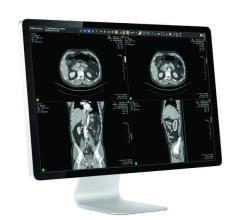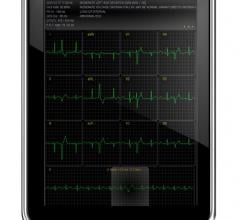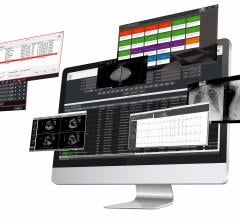
To help address connectivity issues, Diagnostic & Interventional Cardiology is hosting a one-day online Unified Cardiovascular Information Systems (CVIS) Virtual Conference, Thursday, March 17.
Interoperability is key to the meaningful use and sharing of patients’ electronic images and information. However, many cardiovascular departments still confront major obstacles to smooth connectivity between imaging systems, diagnostic devices, picture archiving and communication systems (PACS), hemodynamics, reporting software, electronic medical records (EMR) and hospital information systems (HIS). To help address these issues, Diagnostic & Interventional Cardiology is hosting a one-day online Unified Cardiovascular Information Systems (CVIS) Virtual Conference, Thursday, March 17.
After March 17, visitors can still register and log into the archived trade show to listen to the sessions, access speaker slides and visit the trade show floor. The event will be archived and accessible through Seotember 2011.
“Getting interoperability is actually a very hard thing to do,” said seminar speaker William S. Weintraub, M.D., FACC. He is chair of cardiology and director of the Center for Outcomes Research (CCOR) at Christiana Care Health System, Newark, Del. “If you think you can buy a nice off-the-shelf system, nothing like that exists out there.”
Weintraub said each cardiology department, hospital and health system operates differently and has different needs. He said each also has a collection of disparate systems and devices that will vary from facility to facility. For these reasons, all CVIS systems need to be tailored to the facility where they are being installed. During the Unified CVIS conference, several experts will explain what is needed to create a truly vendor-neutral system for the smooth flow of data between hardware, software and departments. The online event includes six live seminars, a virtual trade show floor with numerous vendors offering information on their technology and a chat room where attendees can ask questions of their peers. Participants who attend seminars and visit vendor booths can win prizes, including iPads.
The one-day conference is designed to help heads of cardiology departments in the process of converting from paper to electronic records, or evaluating new solutions to replace older systems. Speakers will explain how they wired their cardiac departments and overcame specific integration issues.
Even if a system says it’s “DICOM-compatible,” this does not always guarantee connectivity, said seminar speaker James E. Tcheng, M.D., professor of medicine, professor of community and family medicine, Duke University, Durham, N.C. He said each vendor’s system reads or saves DICOM a little differently. “We have had a lot of problems reading CDs with cath lab and echo images that are supposedly DICOM format,” Tcheng said. For this reason, he said it is important to know what questions to ask when purchasing a system to help prevent these issues.
As director of the Duke Transitional Medical Institute (DTMI) Biomedical Informatics Core, Tcheng leads efforts to develop a community of faculty and staff involved in biomedical informatics across all departments, centers, institutes and schools at Duke. He is co-chairman of the American College of Cardiology (ACC) Informatics Committee and a member of the Cardiovascular Medicine Work Group of the Certification Commission for Healthcare Information Technology (CCHIT). During the conference, he will explain some of the keys needed for connectivity and share his experiences encountering issues at Duke and overcoming them.
“Our experience has been you can’t trust the vendor to come in and make your system work,” he said. Tcheng added it is up to a hospital to follow through with the vendor and have them fix problems, and it will be up to the hospital’s IT department to find solutions for many of the smaller day-to-day integration issues that arise.
Alan Katz, M.D., FACC, vice president of medical informatics for Catholic Health Services in Long Island, N.Y., will explain what to look for in an ideal CVIS system. He said a main difference with CVIS and radiology information systems (RIS) is the use of structured reporting vs. dictation. He is an advocate for structured reporting because it is very important to mine the information not just for cardiology, but also for studies and unanticipated situations that may arise in the future.
John R. Windle, M.D., professor and chief, internal medicine, division of cardiology at the University of Nebraska Medical Center, Omaha, Neb., has conducted research in computerized decision-support and guideline modeling/health informatics. He also is very active in CCHIT and the ACC Informatics Committee. He will discuss how to optimize data flow through the cath lab, how to export it to external registries and how to incorporate clinical decision-support.
Andres Rubiano, systems director, cardiology and perioperative services, Ochsner Health System, New Orleans, will explain how to select and install a CVIS. His discussion will include how to create a selection committee, develop specs for an RFP, what to look for when conducting site visits and how to work with vendors.
Maureen Polensky, RN, BSN, cardiology department database specialist, Heart Institute, Doylestown Hospital, Doylestown Pa., will explain how to collect and transfer data to the American College of Cardiology (ACC) National Cardiovascular Data Registry (NCDR) and the Society for Thoracic Surgeons (STS) registry. She will also offer a staff perspective and tricks of the trade.


 March 06, 2024
March 06, 2024 



